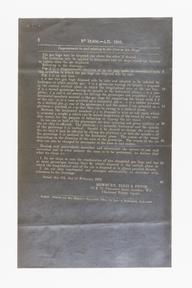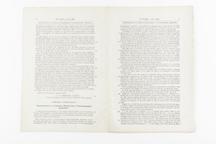

Gaumont Kalee Duosonic Perspectasound unit.
Perspecta was a directional motion picture sound system, invented by the laboratories at Fine Sound Inc. in 1954. As opposed to magnetic stereophonic soundtracks available at the time, Perspecta's benefits were that it did not require a new sound head for the projector and thus was a cheaper alternative.
Introduced as a "directional sound system" rather than a true stereophonic sound system, Perspecta did not use discretely recorded sound signals. Instead, three sub-audible tones at 30 Hz, 35 Hz, and 40 Hz are mixed appropriately and embedded in a monaural optical soundtrack, in addition to the audible sound. When run through a Perspecta integrator, depending on whenever each tone is present, the audio is fed into a left (30 Hz), center (35 Hz) and right (40 Hz) speaker. Unlike true stereophonic sound, which would be described as discrete tracks running in synchronization in time and phase, Perspecta merely panned a mono mix across various channels. Because of this, only isolated dialog or sound effects could be mixed to be directional. Mixed sound effects, dialog and music could not be suitably mixed. Aside from panning, Perspecta controlled gain levels for each channel through the amplitude of each control signal.
MGM Studios and Paramount Pictures were major supporters and developers of Perspecta. MGM used it on nearly everything that they released between mid-1954 to approximately 1958, including shorts, cartoons and trailers. Paramount used it, uncredited, on all their VistaVision pictures until it fell out of favor around 1958. In theory, the "High Fidelity" in VistaVision's trademark strongly implied high-fidelity sound, but, in reality, the system provided only higher fidelity Technicolor prints (after the 1955 revision of Technicolor's dye-transfer printing process), not higher fidelity sound. Universal-International, Warner Bros., Columbia Pictures, United Artists, and Toho were among some of the other major studios to utilize Perspecta regularly.
Details
- Category:
- Cinematography
- Object Number:
- 2012-5050
- Measurements:
-
overall: 720 mm x 340 mm x 290 mm, 32.5 kg
- type:
- sound unit




